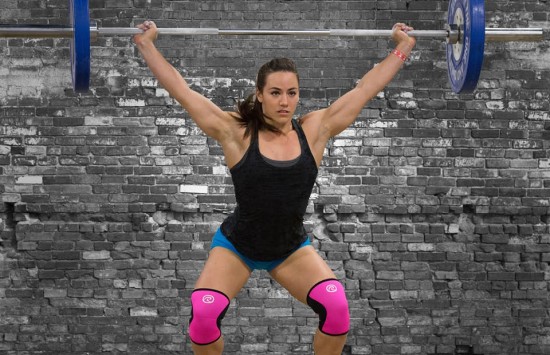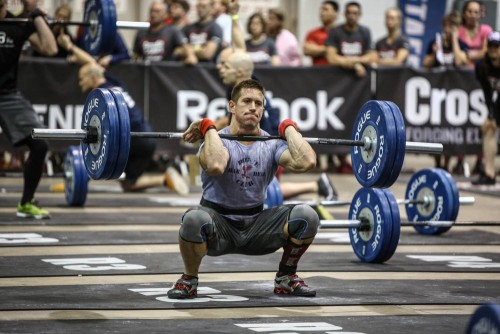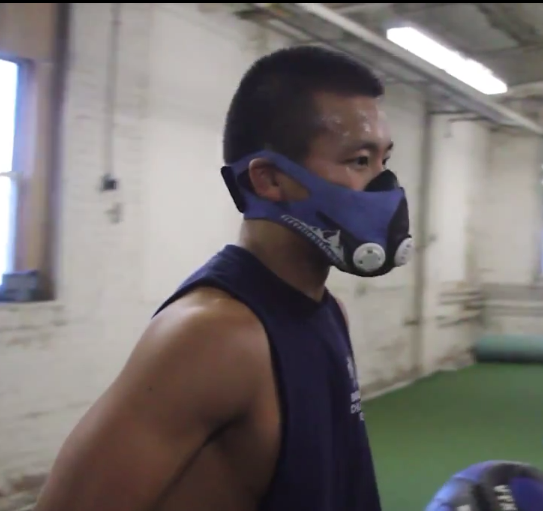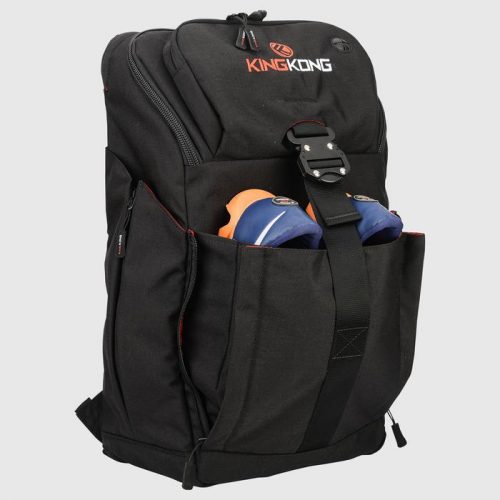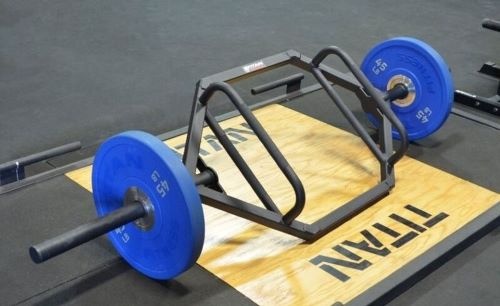If you’re hitting the gym regularly, you’ve probably seen those athletes with knee sleeves and wondered, “Do I need those?” The short answer is, they could be a game-changer for you, especially if you’re into heavy lifting or high-intensity workouts.
In this article, we’ll dive deep into why knee sleeves could be a worthy addition to your gym gear, helping you perform better and protect those all-important knee joints. So, stick around if you want to give your knees the VIP treatment they deserve.
So, What Exactly Is A Knee Sleeve?
A knee sleeve is a stretchy piece of material that goes around your kneecap to provide support to the joints and ligaments in the area while not reducing mobility. You may see professional athletes in CrossFit, powerlifting, Olympic weightlifting, basketball, football, and a wide variety of other sports wearing sleeves on various parts of their bodies.
Knee sleeves are different than knee braces in the way that they aim to prevent future knee injuries by keeping the knee warm and compressed. Knee braces, on the other hand, are often utilized after a surgery or injury to give the knee extra support and prevent the knee from further damage.
To me, alongside keeping the knee warm, the compression that the sleeve provides is the greatest benefit. The basic idea is that compression and blood flow improve recovery times, and can go as far as reducing knee pain and swelling.
The best knee sleeves hold the patella (kneecap) in place during exercise and that could lead to a slight increase in performance as per this study showing a few percentage increase in performance in rugby union players during sprint tests.
So, Should I Use Knee Sleeves?
A lot of people get hung up on the debate of whether or not knee sleeves ACTUALLY increase performance i.e. make you run faster, help you squat more weight, or make you jump higher.
In one of the previous paragraphs, I cited an article showing a measly few percentage performance gains from the use of sleeves – did that get you hyped up a bit to use sleeves and add a few more pounds on your squat? Well, here’s another study that only shows improvements in recovery, and not in performance.
Clearly, there is some grey area, both scientifically and non-scientifically, whether or not knee sleeves directly increase your performance – but for me, that’s not the reason why I wear them or would suggest anyone should wear them.
What Do Knee Sleeves Do For You?
It’s a small piece of cloth that compresses your knee – you really can’t expect that much of a performance increase from the basic device! In my opinion, the really greatest benefits of knee sleeves are:
- Increased stability
- They keep your knees warm
- Risk of injury is reduced
- The sleeve can keep you conscious of your knee-tracking
As you can see, I’m not citing a direct performance increase as any of my reasons for recommending sleeves, but going through the list these all indirectly increase my performance because they allow me to train safer and for longer without worry of injury.
In my mind, they do increase performance because my training will not be interrupted by knee issues, tightness, swelling, and stiffness that often accompanies athletics, training, squatting, and the likes.
So who would I recommend knee sleeves to? Anyone who trains frequently and at a high intensity. The sleeves keep your knees warm, in place, and safe when you’re really amping up the intensity and training hard. Also, on the recovery front, you can wear your sleeve while you’re not training to increase compression and blood flow to keep you feeling fresh for the next day’s training.
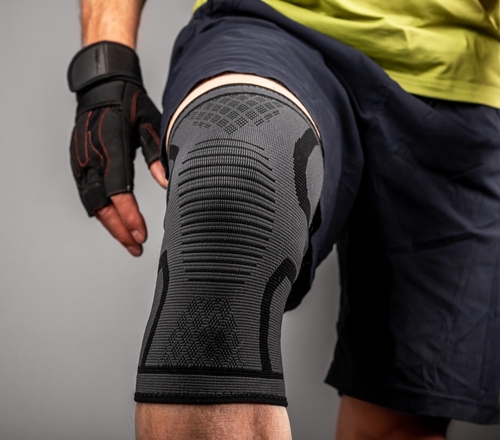
When Should You Wear Compression Knee Sleeves?
During Heavy Lifting:
If you’re into powerlifting or you’re simply pushing your weight limits, knee sleeves can be your best friends. They offer the compression needed to keep the knee joint stable, thereby reducing the risk of injury or strain. This is particularly crucial when performing squats, deadlifts, or any movement that places a large amount of stress on the knees.
High-Intensity Workouts:
When you’re going all out in a high-intensity interval training (HIIT) session or during CrossFit, the quick transitions between exercises can be tough on your knees. Wearing knee sleeves can provide that extra bit of support and stability, helping you to maintain proper form even as fatigue sets in.
Recovery Training:
While it might sound counterintuitive to wear compression knee sleeves during lighter workouts or recovery sessions, they can actually be quite beneficial. The compression offered by knee sleeves enhances blood flow, which can help in the healing and recovery process.
How to Choose the Right Knee Sleeves
What’s the Fabric?
Alright, let’s talk material. You’re gonna see a lot of neoprene out there, and for good reason. It’s stretchy, durable, and does the job.
But if you’re the sweaty type or you’re gonna wear them for hours, look for ones with breathable mesh. Trust me, your knees will thank you.
Size Matters, Really:
Don’t just wing it when it comes to size. If the sleeve is cutting off circulation or sliding down your leg, you’re missing the whole point. Most brands have a sizing guide that goes by your knee or calf circumference.
So break out that measuring tape, and if you’re on the fence, dig into some reviews or hit up a forum.
Brands You Can Trust:
Sure, you could snag a cheap pair online, but we’re talking about your knees here. Quality matters. Brands like Rehband, SBD, or Rogue have a solid rep in the athletic community.
They might cost a bit more, but it’s a worthy investment for something that’ll actually do its job and stand the test of time.
How To Measure For Knee Sleeves
Figuring out the right fit for your knee sleeves isn’t rocket science, but it’s definitely something you shouldn’t gloss over. You want these babies snug but not suffocating your kneecaps. Too loose and they won’t support you; too tight and you risk turning your legs into sausages.
Now, to get it just right, grab a measuring tape if you have one, or improvise with a string and ruler. You’re aiming for a fit that’s cozy without cutting off your circulation or making you wince in discomfort. Trust me, your knees deserve that Goldilocks-level attention.
Knee Sleeves vs Knee Wraps: What’s The Difference?
Knee sleeves and knee wraps might look like they serve the same purpose, but they’re as different as night and day. A compression knee sleeve is generally made of neoprene and slide right onto your leg. They provide consistent compression and support to the knee joint and surrounding muscles. Think of them as the comfort food of knee protection; they’re there to keep you snug and secure without making a big fuss.
Knee wraps, on the other hand, are more like the spicy food of knee protection. Made of heavy-duty elastic, you wrap these around your knees as tightly as you prefer. They’re geared for heavy lifting, offering significant mechanical advantage by storing and releasing energy during squats or leg presses.
But beware, they’re not meant for prolonged use, as they can cut off blood circulation if wrapped too tight. So, are you going for comfort or are you living life on the edge? Your choice.
Common Myths and Misconceptions
“Knee Sleeves Replace Good Form”: This one’s a classic. Listen, knee sleeves are awesome for support, but they aren’t a magic fix for sloppy form. You’ve still got to nail those squats and lunges properly. Think of sleeves as a helpful sidekick, not a substitute for learning the basics and maintaining good technique.
“Only for the Walking Wounded”: Another misconception is that these sleeves are just for athletes who are already dealing with knee issues. While they do offer extra support for those who need it, they’re also great for preventive care. Even if your knees are in tip-top shape, using sleeves can help keep them that way, especially during heavy lifts or high-impact activities.
Tips for Care and Maintenance For Knee Sleeves
Cleaning and Storage:
Let’s face it, after a hardcore session, those knee sleeves are going to stink—no judgment, we’ve all been there. But please, for the love of all gym-goers, wash those babies. Most can be tossed in the washing machine, but double-check the label.
After washing, let them air dry; don’t throw them in the dryer unless you want knee “bracelets.” Store them flat to maintain their shape, or you’ll be wrestling them back to life like a pair of tangled earbuds.
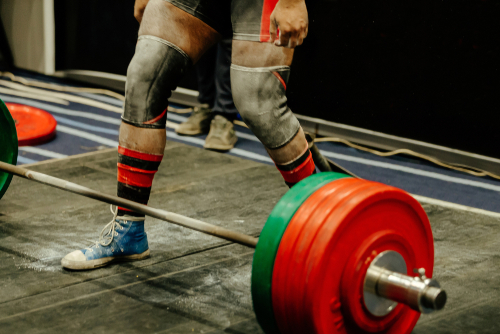
When to Say Goodbye:
Knee sleeves aren’t a lifelong commitment. They age, just like fine wine or that bread you forgot in the back of the fridge.
If they start to lose their elasticity, offer less support, or you can’t remember the original color under the layers of stains and grime, it’s time to part ways. Think of it as an opportunity to upgrade. Trust me, your knees will thank you.
Wrap Up
So if you’re doing a lighter workout following a heavy lifting day, or just giving your joints a break, knee sleeves can provide that extra layer of support and speed up recovery.
If you’re interested in a pair of knee sleeves here’s a great selection of high-quality knee sleeves from Rogue for whatever barbell sport you participate in.
Thanks and take care!

Ryan is a former college wrestler and lifelong fitness fanatic. He has run half marathons, done mud runs, placed in body transformation contests, coached wrestling, and now coaches girls’ soccer. Not to mention he has also tried literally hundreds of supplements over the years and has a vast and thorough supplement knowledge. He has written for Muscle & Strength, Testosterone Junkie, The Sport Review and other publications. He is also the editor-in-chief of this website and has over 25 years of experience in the fitness industry. Feel free to connect with him on his LinkedIn page below.

